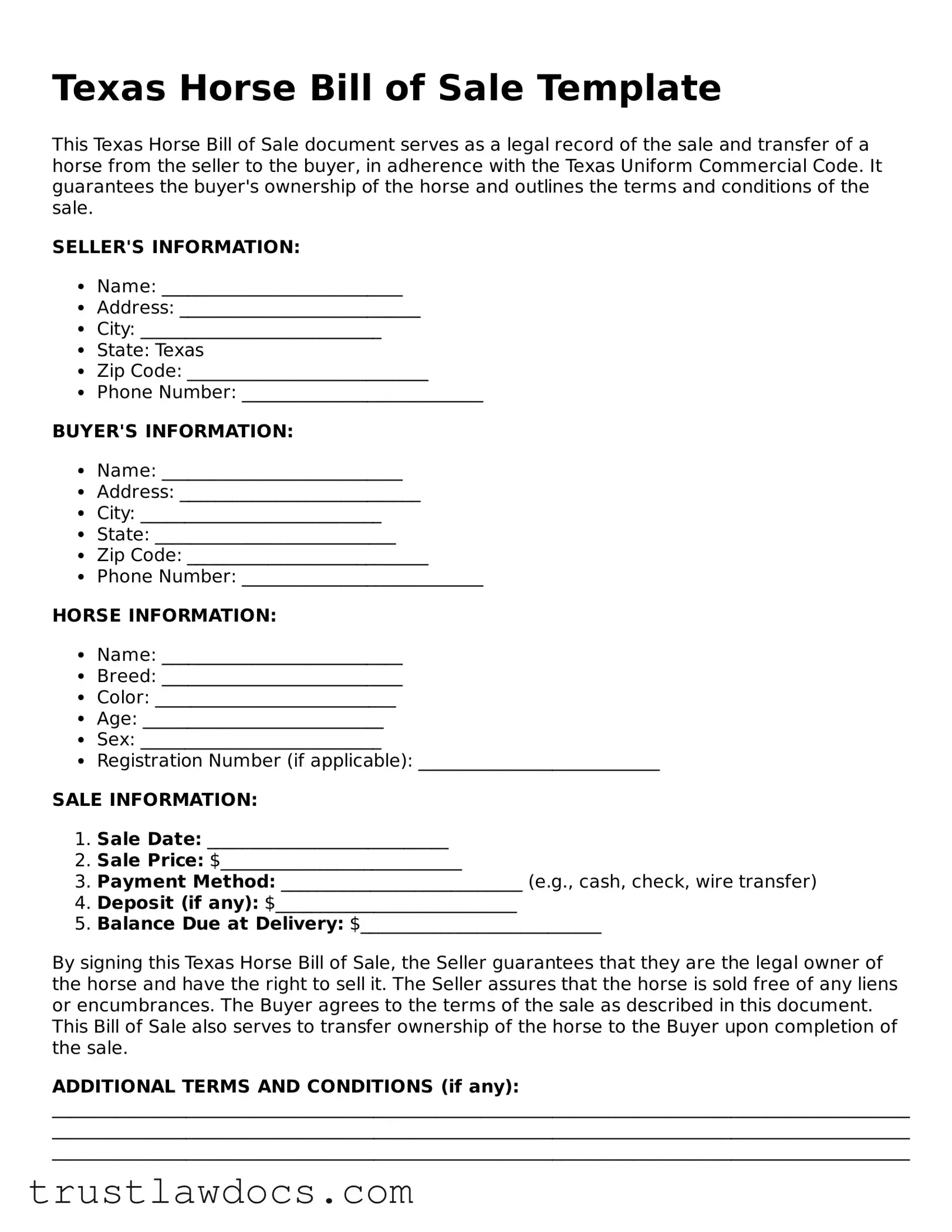The Texas Horse Bill of Sale is akin to the Vehicle Bill of Sale in several respects. Primarily, it serves as a documented agreement that records the transfer of ownership from one party to another. Much like when someone buys a car, the Horse Bill of Sale confirms that the buyer has agreed to purchase the horse for a specified amount and acknowledges the receipt of the payment. Both documents typically include details about the item being sold (a horse in one case, a vehicle in the other), the sale price, and the particulars of the buyer and seller, ensuring a smooth ownership transition.
Similarly, the Equipment Bill of Sale shares common ground with the Horse Bill of Sale. This document is utilized when selling or buying equipment, and it functions to legally document the transaction and transfer of ownership. It requires information about the equipment (make, model, condition), the sale amount, and the identities of the participating parties. Just as with the Horse Bill of Sale, this form acts as proof of purchase and protects both the buyer and the seller by detailing the agreed terms of the sale.
The Livestock Bill of Sale is another document that closely mirrors the Texas Horse Bill of Sale. It is used specifically in transactions involving animals such as cattle, pigs, sheep, and sometimes horses. This bill records the sale and transfer of ownership of any livestock, outlining details such as the animal's description, health condition, and any other pertinent particulars. The core similarity lies in its role in ensuring legal ownership transfer and protecting the rights of both the buyer and the seller in the transaction.
The Boat Bill of Sale is also related, emphasizing the importance of documenting transactions for different types of property. This document records the sale of a boat, including necessary specifics such as the make, length, type, and serial number of the boat, alongside the agreed sale price. Similar to the Horse Bill of Sale, it establishes the change of ownership and is often required for the registration of the boat under the new owner's name, serving both a legal and administrative purpose.
The Firearm Bill of Sale is essential for transactions involving guns and shares similar functions with the Horse Bill of Sale, despite the vastly different types of items being sold. It officially documents the sale and transfer of ownership of a firearm, detailing the make, model, caliber, and serial number, among other specifics. Both documents ensure the protection of legal rights and adherence to state regulations, making them indispensable for a smooth and lawful transfer.
The Business Bill of Sale stands in parallel to the Horse Bill of Sale, albeit in the context of selling business assets rather than animals. This document solidifies the sale of various business assets and includes detailed information about the assets, the sale amount, and the parties involved. The function of legitimizing the transfer and ensuring that both parties adhere to agreed terms is a critical aspect of both documents. They serve as valuable records of the transaction for future reference or in case of disputes.
Lastly, the Real Estate Bill of Sale, while distinct in its application to immovable property, aligns with the Horse Bill of Sale regarding its purpose and structure. It records the sale of property, including land or houses, and includes information on the property's location, the sale price, and the identities of the buyer and seller. Though the tangible items differ, both documents act as pivotal proof of ownership transfer, safeguarding the interests of all involved parties.
